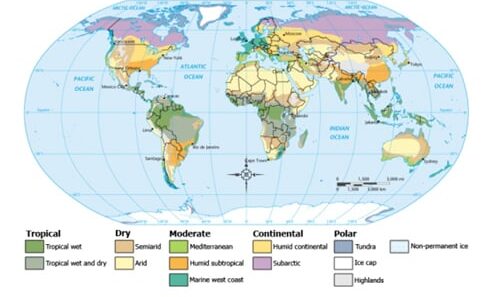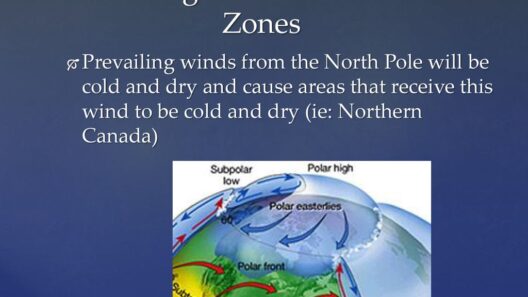The climate of South Africa is as diverse and multifaceted as its rich cultural tapestry. Spanning a range of latitudes and altitudes, the nation experiences an array of climatic zones, each contributing to its vibrant ecosystems and agricultural practices. But what exactly shapes the climate within this quintessential “Rainbow Nation”? And can the multifarious weather patterns pose challenges for its inhabitants as they aim for sustainable living?
To understand South Africa’s climate, one must first appreciate its geographical complexity. The country is roughly divided into three primary climatic zones: the coastal region, the interior plateau, and the mountainous areas. These regions collectively create a temperate but exhilarating climatic spectrum, ranging from the arid conditions of the Kalahari Desert to the temperate, almost Mediterranean climates observable along the southern coastline.
Starting with the coastal regions, the Western Cape benefits from a Mediterranean-like climate, characterized by hot, dry summers and mild, wet winters. This is largely due to the cold Benguela current, which flows northward along the Atlantic coast. The climatic conditions support a wealth of biodiversity, particularly in regions such as the Cape Floristic Region, recognized as a UNESCO World Heritage site. These areas yield a variety of crops, most notably wine grapes, which thrive in the summer sun. However, just how resilient is this agriculture in the face of climate change?
As one moves inland, the landscape shifts dramatically, introducing a semiarid climate that predominates much of the Karoo region. Here, the summers are scorching, while winter nights can plunge to near-freezing. This stark contrast creates a unique environment where specialized flora and fauna have adapted to survive. Rainfall is sparse and sporadic, often yielding just 200 to 500 millimeters annually. Farmers face the challenge of efficiently harvesting rainwater and utilizing drought-resistant crops to sustain livestock and crops.
In the northeast, one encounters the subtropical climate of regions like Mpumalanga and KwaZulu-Natal, where the Indian Ocean’s warm currents influence weather patterns. This zone experiences summer rainfall, making it one of the country’s most fertile agricultural areas. The lush landscapes here are home to a wealth of wildlife, with Kruger National Park being a remarkable epitome of biodiversity. Yet, as global temperatures rise and shifts in weather patterns become more pronounced, how can local farmers adapt to ensure food security while preserving their environment?
The interior plateau also presents a unique climate, defined by high altitude and significant temperature variations. Regions like Gauteng experience a moderate climate, with afternoon thunderstorms prevalent in the summer months. These storms cool the blistering heat and provide essential moisture to replenish groundwater levels. However, this highly variable rainfall can present a double-edged sword for residents: While it supports agriculture, it can also lead to flooding and soil erosion, complicating effective land management practices.
Climate change has compounded the existing challenges associated with weather variability. The Intergovernmental Panel on Climate Change (IPCC) has warned about increased temperatures, shifting rainfall patterns, and rising sea levels, all of which can have devastating impacts on South Africa’s environment and economy. Droughts and floods have become more frequent, causing widespread damage to both agriculture and infrastructure. How resilient will South Africa be as these changes continue to unfold?
Furthermore, the disparity in climate across regions leads to varying vulnerabilities. Coastal areas may need to fortify themselves against rising sea levels, while inland communities must develop robust irrigation strategies to contend with extended dry spells. Adopting sustainable practices and innovative technologies will be crucial for mitigating the adverse effects of a changing climate. Can the unified spirit of the Rainbow Nation guide its citizens towards collective action for environmental stewardship?
Energy consumption is another consideration as South Africa’s climate pivots toward sustainability. The country heavily relies on coal for electricity, leading to significant greenhouse gas emissions. Transitioning towards renewable energy sources, such as solar and wind, is imperative—not just to address climate concerns but also to secure energy independence. How can communities leverage their natural resources to develop sustainable energy practices that respect both nature and societal needs?
While the climate of South Africa is undoubtedly intricate and diverse, it presents both opportunities and challenges for its people. The journey towards sustainable development and climate resilience requires a concerted effort from all sectors of society. From policymakers to farmers, every individual has a vital role in adapting to the challenges posed by climate change. Education and awareness campaigns can embolden communities to adopt sustainable practices, ensuring a more environmentally conscious future for all.
In conclusion, as the Rainbow Nation navigates the intricate layers of its climate, the path forward necessitates both adaptability and vigilance. The unique interplay between geographic location, weather patterns, and human activities creates a dynamic that shapes not only the climate but also the livelihoods and well-being of its inhabitants. Will South Africa rise to the occasion, embracing its diversity as a strength rather than a challenge in the face of a changing climate?







